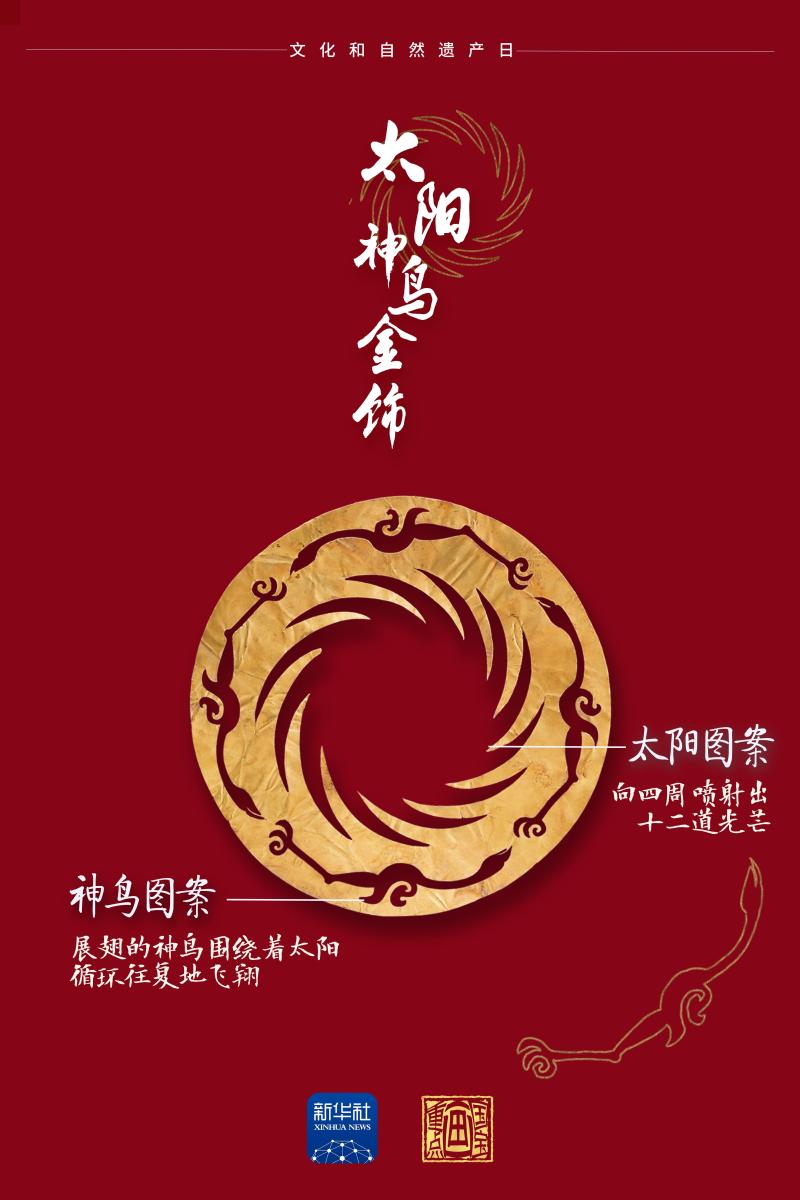General Secretary Xi Jinping’s Concerns|Travel to Liangshan Villages
The wind in Liangshan blows rapidly through the valley, making the clothes of pedestrians rustle; the wind also seems to turn the pages of history, telling moving stories of changes.
The Wumeng Mountains and the Hengduan Mountains form a huge angle in the southwest, which is Liangshan Prefecture in Sichuan. There are more than 20 mountains with an altitude of more than 4,000 meters here. The rapids with high height differences have eroded the surface of the earth, and there are intertwined cliffs and thousands of ravines. In 2013, there were 881,000 poor people and more than 2,000 poor villages here. It is one of the concentrated contiguous extremely poor areas in the fight against poverty.
"I have always cared about the Yi people." At the critical moment of the fight against poverty, on February 11, 2018, General Secretary Xi Jinping fulfilled his promise to travel to all deeply impoverished areas across the country and came to Liangshan Village to provide guidance for the development here. direction.
Today's Liangshan is writing a new page of efforts to consolidate and expand the results of poverty alleviation and to integrate and upgrade the comprehensive revitalization of rural areas. The reporter and his party recently went deep into the hinterland of Liangshan, and what they saw were new houses, new roads, smiling faces, and new industrial projects... In 2023, the annual per capita net income of the people who have been lifted out of poverty in the state is 13,220 yuan, which is 10%. The annual per capita net income of the poor was 8.1 times that of 1,628 yuan a year ago. The earth-shaking changes make people truly feel what is the "source of confidence" to promote comprehensive rural revitalization and achieve common prosperity.
There is a Yi proverb: "When I see the spruce trees on the mountain, it makes me miss you..."
There are many mountains and many loops. The car climbed over another slope and entered Huopu Village, Jiefanggou Town, Zhaojue County, at an altitude of 2,800 meters. A newly planted spruce stood tall and proud at the head of the village. Ji Dierzi, a 63-year-old Yi man wearing a black kerchief and a blue coat, said that this was a spruce brought by the whole village from the mountains and planted at the place where General Secretary Xi Jinping stopped during his inspection.
Ji Dierzi stood in front of the "Missing Tree". Photo by reporter Yin Heng
Huopu means "top of the mountain" in Yi language. In 2014, the poverty incidence rate here was 34.8%, and the villagers could only grow some potatoes and oats to rely on the weather for food. In the fight against poverty, the villagers were confused at first. They planted morels first and then honeysuckle, which was not ideal. In March 2020, we tried planting blueberries with the help of the local government and selected 1 variety from 19 varieties.
"Everyone tried to sell the harvest in the first year, but unexpectedly they were all robbed." Gidierzi smiled, "Everyone is excited." Agricultural technology experts also took great pains to simplify the technical solution into a jingle. At that time, all the people in the mountain could be heard shouting: "Dig a hole, put a bag of nutrients in it, plant a tree, cover it with a piece of cloth..."
A corner of the blueberry base in Huopu Village. Photo by reporter Yin Heng
In 2023, the first batch of blueberries will enter the peak production period, with an output value of nearly 30,000 yuan per mu. Ji Dierzi's annual income reached 16,000 yuan. He even flew to Shibadong Village in Hunan to experience the place where targeted poverty alleviation was first proposed. "Shibadong Village is beautifully built, and my hometown will become even more beautiful." He said to everyone he met after returning.
Walking along the industrial trail, the village is building a visitor center, and the sparks of electric welding are shining; the mountain breeze blows, and the vibrant blueberry trees, tall red maples, and blooming soma flowers are all over the mountains and fields, rustling.
"The annual per capita income in Huopu Village has now exceeded 15,000 yuan. The village is striking while the iron is hot and plans to form a blueberry farm of 3,000 acres as soon as possible, driving the development of tens of thousands of acres of surrounding areas." Jiefanggou Town Party Committee Secretary Jike Jinsong said.
Not far away, in Gukede Scenic Area, the Soma Flower Festival is in full swing. Athletes are riding mountain bikes on the mountain trails. Excited tourists check in and take photos. At night, they hold hands around the bonfire and dance the "Dance." It's so cool. Liangshan scenery!
Agriculture, forestry, animal husbandry and tourism are integrated, and multiple measures are taken to increase income. In 2023, the added value of Liangshan Prefecture's primary industry will reach 50 billion yuan for the first time.
Along the winding mountain road, after countless turns, we arrived at Sanhe Village, Sanchahe Town, Zhaojue County.
Along the stone road, bend down and walk into the low eaves. This is a deliberately preserved former Yi village - dim lights, cramped rooms, uneven floor slabs, and narrow firepits outline the village for thousands of years. People's lives are not easy.
Standing at the highest point in the village and looking out, you can see the clear blue sky in the distance, the wind turbine blades on the ridge turning slowly, and nearby the winter peach forest, with branches covered with fluffy peach balls. Luo Gu Youge, deputy secretary of the Party branch of Sanhe Village, said that the output value per mu reaches more than 6,000 yuan.
When we walked into the new village settlement, we saw that the old village had changed from being low and low. The roof beams were soaring, the yards were wide, and there were vegetable plots in front of every house. The village square is clean and tidy, and there are also unique watchtowers.
The key to cutting off the root causes of poverty is to prevent the intergenerational transmission of poverty. General Secretary Xi Jinping urged that “education must keep up and we must never let children lose at the starting line again.”
"The national flag is so beautiful. The golden stars shine on the earth. I would like to turn into a little red cloud and fly into the blue sky to kiss you." At the opening ceremony of the 2023 Chengdu Universiade, the auspicious and fruitful singing moved countless people. Liangshan Ayi stared at the national flag. The appearance spread throughout the world as it was broadcast on television.
Ji Haoyouguo, who has loved singing since she was a child, is now in the second grade of junior high school in Xichang. At her home in Sanhe Village Xincun Settlement, 19 of her certificates are posted on the wall. "This is the red scarf volunteer commentator, the star of progress, the sunshine boy of Liangshan Prefecture..." Ji Haoyouguo revealed his wish, "I want to be admitted to the Conservatory of Music and become a music teacher in Daliangshan."
My younger sister, Yoshihao Yumo, who is in fourth grade, also quickly said, "I want to be an English teacher!" Seeing the seriousness of the two sisters, the adults all laughed.
Ji Hao Youguo and his father Ji Hao also asked to take a photo at their new home in Sanhe Village. Photo by reporter Yin Heng
In the village history museum of Sanhe Village, Ayi who was admitted to university is listed: Luo Xiu, PhD student at Sichuan University; Luo Xi, Master of Laws at China University of Political Science and Law; Luo Chen, captain of the national flag honor guard at Wuhan University of Technology...
Never let a child lose his dream by dropping out of school! In the past five years, Zhaojue County’s total financial investment in education has reached a total of 4.72 billion yuan, accounting for 20.79% of the total financial expenditure in the same period. In 2023 alone, Liangshan Prefecture will build, renovate and expand 183 schools, and add 16,600 new degrees. The prefecture's three-year gross enrollment rate for kindergarten will reach 89.7%, the compulsory education consolidation rate will reach 95.74%, and the general high school graduates' admission rate will reach 89.7%. 80%.
The Ayi people are describing the future of the earth's mountains and rivers on their desks.
Starting from Zhaojue County, the off-road vehicle advanced along the Meigu River Canyon. There were dull rain clouds overhead. The driver stepped on the accelerator and rushed out of the canyon hugging the road before the heavy rain poured down.
In front of us is a wider valley. On the side facing the Meigu River, there are thousands of cliffs, and the cliffs are like axes and knives. The original Atuliel Village in Guli Town, 168 kilometers away from Xichang, the capital of Liangshan, is habitually called a cliff village. Climbing up to the cliff for about a hundred meters, you will see steel ladders one after another, folded and erected towards the cliff. Three huge red letters are emblazoned on the cliff: "Cliff Village"!
Cliff Village has attracted widespread attention for its fight against poverty. Many people from other places spontaneously come here to climb the steel ladder. The steel ladder was gentle at first, but after a few turns, it became steeper and more dangerous. On the steel ladder, each figure shrank to a small point, and their bodies were suspended in the air. They only dared to use their hands and feet to hold on to the steel ladder tightly and climb up.
People climbing on the steel ladder in Cliff Village. Photo by reporter Xie Jiao
When they were tired, people would hang on the steel ladder, with a few little squirrels jumping around. No one backed down, and from time to time they heard the encouragement of "persistence" and "come on". "We have been preparing for four years to come to Cliff Village." Deng Chaoling, a tourist from Chongqing, said that she hopes the cliff steel ladder can bring spiritual strength to herself and her children.
It took nearly three and a half hours to climb up to the village. This is a village embedded in a small gentle slope halfway up the mountain. Before 2016, villagers had to climb an 800-meter cliff and 218 rattan ladders to enter and exit. For an extremely long time, this village seemed to be isolated from the rest of the world——
"Four generations are on the cliff, my son, me, my father, my grandfather, and counting forward, I don't know where our ancestors came from." Hai Laijiji, director of the Cliff Village Supervisory Committee, who was born in 1976, said that once There is an old man in the village who has never been down a cliff in his life. When his son went down the mountain when he was a child, he had to tie one end of the rope to his waist and the other to a tree.
Hai Laijiji is climbing the steel ladder. Photo by reporter Zhang Xudong
On March 8, 2017, General Secretary Xi Jinping participated in the deliberation of the Sichuan delegation at the Fifth Session of the 12th National People's Congress. He specifically mentioned the "cliff village" and "felt very worried." In June 2017, Liangshan cadres and masses mobilized nearly 30,000 people and spent 120 tons of steel pipes to build a 2,556-step steel ladder up the mountain, bidding farewell to rattan ladders.
Standing on the top of the peak, the strong wind made it almost unsteady. Hailai Jiji said that at the end of 2020, the original Atulier Village, Shuozhu Village, Lailuo Village, Lailuo Society, and Guze Society merged to form a new village, named Cliff Village. By 2021, through relocation for poverty alleviation and cultural tourism resettlement in Cliff Village, 1,171 people have been resettled in the county, 148 people have been resettled in Lailuo Village, and 259 people have been resettled through other means. Travel throughout the village has completed the historical changes of "rattan ladders to steel ladders" and "steel ladders to stairs".
"Are there any villagers on the mountain now?" someone asked.
Hai Laiji led us to several houses at the top of the mountain. They had refrigerators, TVs, beds, and were kept clean and tidy. The owner, Rizqu, is the village’s security officer. "Every day, Cliff Village welcomes thousands of guests. The village is not a scenic spot. The villagers have to shoulder the responsibility. We must prepare food and accommodation for tourists, protect their safety, and prevent forest fires." Diri Quji said, and olives were planted on the mountain. , navel oranges, green peppercorns, Chinese herbal medicines, goats, and the middle-aged people will work in turns; the elderly and children live in the city and enjoy high-quality education and medical care.
Children attend classes in the Muendi Community Kindergarten at the centralized resettlement site for poverty alleviation and relocation in Zhaojue County. Photo by reporter Yin Heng
"Although the cliff is dangerous, it has infinite beauty. It condenses the image of poverty alleviation and attracts people to experience it." Bai Jilian, the head of Zhaojue County, said that the county is stepping up its efforts to promote the "three-village linkage" of Huopu Village, Sanhe Village and Cliff Village. It is the leading 128 integrated development projects of agriculture, culture and tourism.
The "Three Villages" in progress are a microcosm of the changes in Liangshan villages. Standing on this extremely high place beside the Jinsha River, the sense of acceleration of development comes through the clouds and fog——
The Leshan-Xichang Expressway is running from north to south, running through the Liangshan and Liangshan Mountains; the Sichuan Riverside Expressway is running from east to west, connecting Yibin, Liangshan and Panzhihua; the newly completed Chengdu-Kunming Railway is speeding up the Chengdu-Kunming artery; "Tianfu" The second phase of the Daqiao Reservoir Irrigation Area, the Longtang Reservoir Irrigation Area, the Mishi Reservoir and other water networks in the "Liangcang Liangshan Area" are being accelerated...
During his inspection in Sichuan in 2023, General Secretary Xi Jinping pointed out that “we must consolidate the results of poverty alleviation and put rural revitalization in a prominent position in governing Sichuan and Sichuan.” For merit".
Following the picture drawn by the General Secretary, Sichuan and Liangshan are actively promoting the integrated development of urban and rural areas, focusing on things that can quickly see results for the masses.
In Xichang, the capital of Liangshan, outside the Liangshan Yi Slave Society Museum, a huge rope sculpture that was broken free attracted tourists to stop and marvel. On May 22, 89 years ago, the Red Army's "Yihai Alliance" sown the seeds for the poor to turn around in Liangshan.
Mo Sewuluo, the museum's guide, said with emotion: "Liangshan has made a direct transition from a slave society to a socialist society, and it has spanned a thousand years. Now, the great changes from poverty alleviation to comprehensive rural revitalization are shining in the annals of history!"





